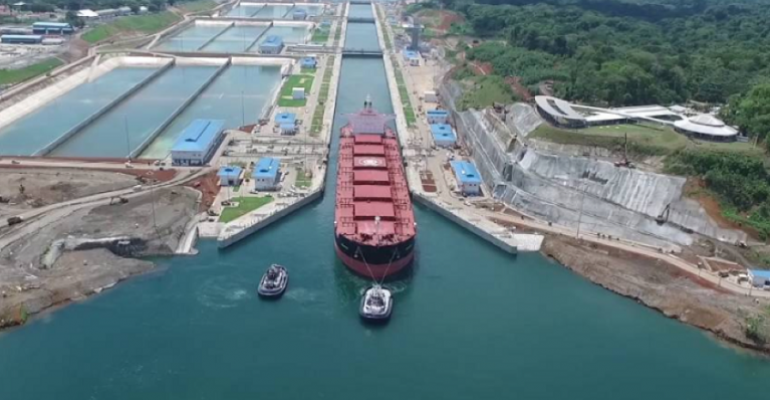The Panama Canal has reduced its maximum draught to 44 feet and is cutting the number of daily transits to 31 compared to 36 – 38 normally as it battles an extended dry season.
Explaining the decision for an additional reduction in the daily transit maximum to 31 from the recent level of 32 Vásquez told the Seatrade Maritime Podcast that one of the reasons was to save water to because of an abnormal and very lengthy dry season.
Related: Podcast: In Conversation with Panama Canal Administrator Ricaurte Vasquez Morales
“We are aiming to have our navigational lake at a specific level, say by late November, when it’s officially the dry season begins so that we can overcome the dry season in Panama and wait for the rainy season that should start in a normal year, probably by the month of April,” he says.
But as the world undergoes climate change continued, and possibly even worse droughts could face the Panama Canal in future and the ACP is exploring options to use predictive weather technology as well as developing a new source of fresh water.
Related: Panama Canal cuts again daily transits as drought continues
“In the future, we have identified a source of fresh water that can compensate the number of transits we have missed because of the drought,” Vásquez explains. “We believe this is going to be an issue that is going to be with us the Panama Canal is climate dependent. So even if we have additional reservoirs, or we try to use different technologies in order to save water in the operation on making more water efficient, there is always a risk from climate.”
He says that what the ACP is trying to understand weather behaviours and patterns so that it can anticipate conditions six months ahead on a regular basis, and not just for a crisis.
“If we can do that, and that is a matter of technology and AI, the reliability of the Panamanian route will be enhanced, and these are solutions that are essentially based on new technology and analytics that will provide that extra edge to push one, two, three vessels per day.”
He notes that it would have been unthinkable even when the new locks for the expanded Panama Canal opened in 2016 to consider working at the water levels it has had the lakes for the last three to four months. “That was unthinkable, but relying more on weather information and making sure that you have real time data, as far as rainfall, precipitation lake levels, and the like are concerned provides tools in order to gauge by the hour, by the day, the way we operate the Panama Canal.
“We do not want to be overly optimistic, I think there is a limit, as I mentioned, we have to preserve water in order to overcome the dry season when it continues.”
In terms of building a new reservoir this is a process that would take five to six years, not just the construction of the basin, but also then filling it from fresh rainwater. Building a new reservoir would also be a national, political issue.
“That requires certain legislative approvals, because as a consequence of the Panama Canal referendum Panama Canal has a limitation on building new reservoirs for canal operations,” Vásquez explains.
Copyright © 2023. All rights reserved. Seatrade, a trading name of Informa Markets (UK) Limited.
Reference : https://www.seatrade-maritime.com/panama/panama-canal-climate-dependent

